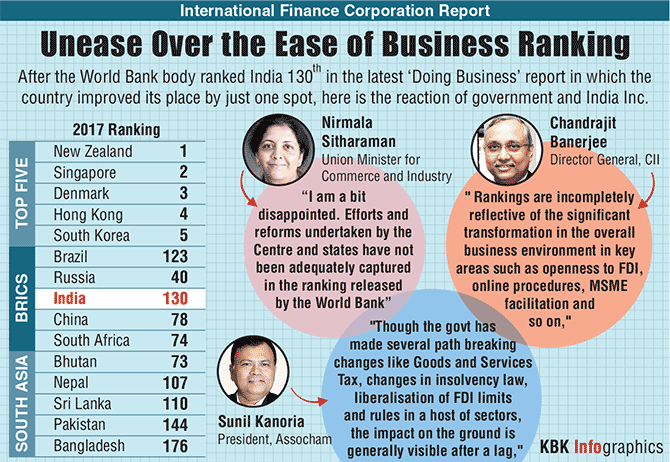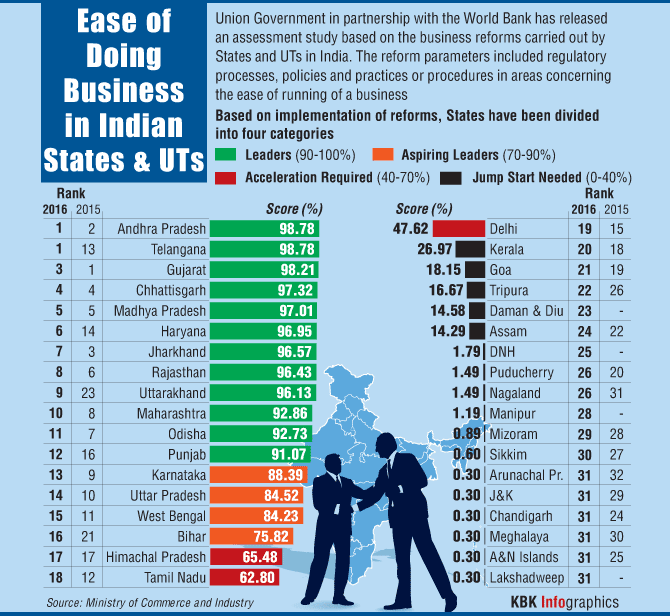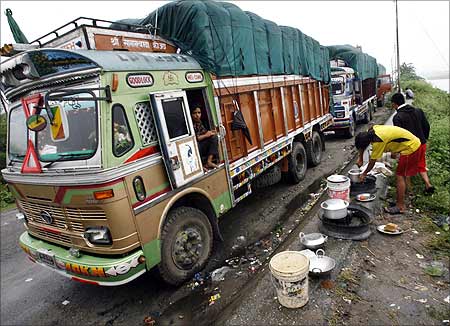India stands at an embarrassingly low 130 among 190 countries in the World Bank's Ease of Doing Business rankings. But in our worry over the World Bank benchmarks are we forgetting the big picture -- to make India an attractive investment destination -- wonders Avirup Bose.

The recently released World Bank Ease of Doing Business rankings, where India has made an embarrassingly low improvement by a single rank, despite robust efforts made by the government, provide us with an opportunity to introspect if the government's efforts are in the right direction.
Early in the tenure of his government, Prime Minister Narendra Modi had openly committed to adopt policies that would catapult India to a spot in the top 50 ranks of the World Bank index by 2017. Based on the 2016 rankings, this has clearly not happened. India currently ranks 130 among 190 countries ranked by the World Bank, and also holds the lowest rank among its BRICS peers.
Since the release of the rankings, there has been a flurry of news stories fretting over India's relatively bad performance. Members of the government have expressed doubts that the World Bank has not taken into account several of the reform efforts initiated over the past year and fairly, the bank claims that it needs to wait for the effective implementation of the proposed/launched reform measures.
But why is this ranking important for India and by obsessing over the World Bank benchmarks are we missing the real purpose for which the government committed to improve India's rank in the first place, that is, to make India an attractive investment destination?

It is vital to understand that although the 11 parameters that the bank considers for ranking economies -- including procedures for starting a business, dealing with construction permits or obtaining electricity connections -- are indicators of how easily businesses in India can administratively operate, several macroeconomic/regulatory issues that are vital for positioning an economy as an attractive investment destination are beyond the rankings' methodological scope.
No doubt India should make efforts to improve its rank but a better performance does not singularly translate into attractiveness of the economy as an investment hub.
As evidence, seven of the countries in the top 10 of the World Bank's rankings are not the top investment destinations, as per a 2016 United Nations Conference on Trade and Development (Unctad) report. Only the economies of the USA, Singapore and Hong Kong are attractive investment destinations as well as economies where doing business is easy. In fact, as per Unctad's rankings, India has climbed five spots on the foreign direct investment rankings since 2013.
The World Bank itself in its 2005 World Development Report indicated that the factors essential for improving a nation's investment climate -- providing enhanced opportunities and incentives to firms to invest productively, creating jobs and expansion -- which directly impact a firm's expected profitability, are influenced by the costs, risks and barriers to competition. Firms will shirk from investing in a jurisdiction where macroeconomic/regulatory factors contribute in enhancing economic costs or risks of doing business.
For example, an economy with archaic labour/industrial laws, without a robust intellectual property rights (IPR) regime, a stable and predictable regulatory framework or greater public infrastructure, will add more costs and enhance the risks on the capital of the investing firms.
Therefore, "ease of doing business" is just one factor that contributes towards building a mature investment climate and not the only one. India should not lose sight of the bigger picture.
India ranks abysmally low at 37 out of 38 countries on the 2016 Global Intellectual Property Centre's IP Index; it is at the 66th spot among 128 nations on the 2016 Global Innovation Index (despite improving upon its 2015 ranking). Securing a stable IPR and innovation climate is an equally important and challenging requirement for transforming the doing-business climate for India and should be of equal focus for the government.
So, the fretting over missed opportunities for improving India's ranking needs to be contextualised with the larger efforts that it needs to make to transform the economy into a premier investment hub.

Another issue that needs quick attention in India's quest for improved ranking is the role of state governments.
Of the 11 parameters on which the World Bank ranks countries, several require implementation at the level of state governments.
For example, efforts for easier access to electricity, quicker construction permits or registration of properties are governed by state laws; even the mandate for quicker enforcement of contracts is an issue that will require to be dealt with at the level of the district and state high courts rather than at the level of the apex court.
Similarly, how quickly one can start a business requires the effective implementation of provisions of the new Companies Act by the state-level Registrar of Companies.
For example, as per government estimates, due to reforms undertaken pursuant to the enactment of the new Companies Act, the time frame for getting a company incorporated is 1.86 days. However, based on stakeholder feedback, the World Bank found that it took two to seven days for incorporating a company.
Therefore, like everything else the devil lies in the detail; implementation of reforms by the states is as much a factor in the improvement of India's ranking as the enactment of pro-business policies/laws by the government.
The government's efforts of continuously ranking states on a 340-point business reform action plan and a recent commitment by the commerce minster to enhance the government's engagement with the states (on securing better implementation of the World Bank's ranking matrixes) seems to be measures in the right direction.
Avirup Bose is assistant professor, Jindal Global Law School, and assistant director, Centre for International Trade and Economic Laws, Jindal Global Law School.
Don't miss: A deep dive into the development status of India's states











